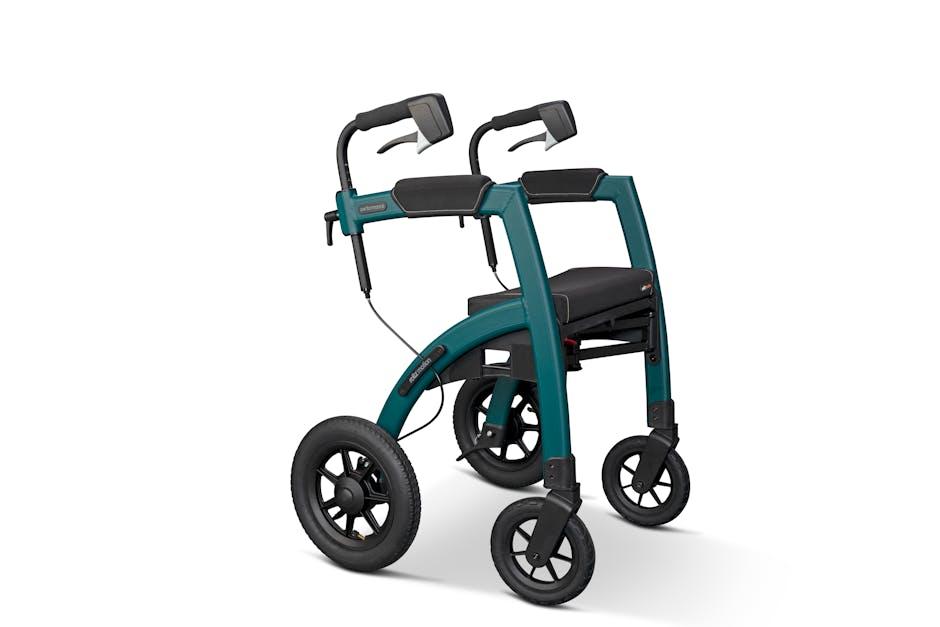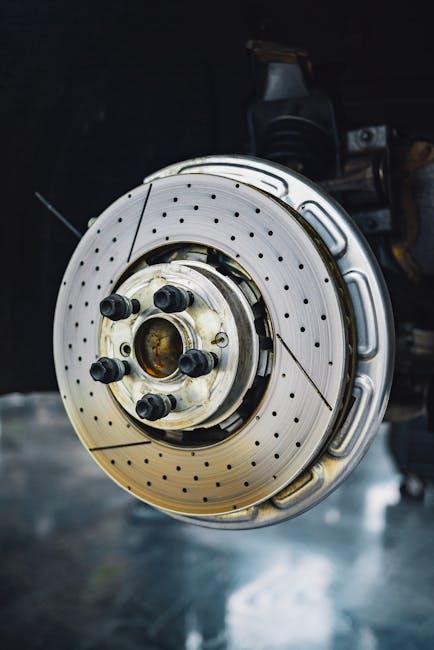When it comes to vehicle maintenance, brake pads play a quiet yet crucial role in ensuring your safety on the road. They don’t often grab headlines, but their condition can make the difference between a smooth stop and a potentially hazardous skid. So, how long do brake pads really last? The answer isn’t as straightforward as mileage alone, as a variety of factors—from driving habits to pad materials—come into play. In this article, we’ll explore the lifespan of brake pads, helping you understand when it’s time to swap them out and keep your brakes performing at their best.
Table of Contents
- Understanding the Lifespan of Brake Pads on Different Vehicles
- Factors That Influence Brake Pad Wear and Tear
- Signs Your Brake Pads Are Approaching the End of Their Life
- How Driving Habits Impact Brake Pad Longevity
- Recommended Maintenance Practices to Extend Brake Pad Life
- Choosing the Right Brake Pads for Durability and Performance
- Q&A
- The Conclusion

Understanding the Lifespan of Brake Pads on Different Vehicles
The durability of brake pads can vary significantly depending on the type of vehicle and driving conditions. For instance, compact cars with lighter frames often experience longer brake pad life due to reduced stopping force requirements, while heavier vehicles like SUVs and trucks tend to wear brake pads faster because of their mass and the increased stress placed on the braking system. Additionally, factors such as urban stop-and-go traffic, mountainous routes, and aggressive braking patterns can accelerate pad wear, making regular inspections essential to maintain optimal safety.
To help you get a better idea of life expectancy across different vehicle types, consider the following typical lifespans:
- Passenger Cars: 30,000 – 70,000 miles
- SUVs and Crossovers: 20,000 – 50,000 miles
- Pickup Trucks: 25,000 – 50,000 miles
- Sports Cars: 15,000 – 40,000 miles
Below is a quick comparison table to illustrate the average lifespan ranges visually:
| Vehicle Type | Average Brake Pad Lifespan (miles) |
|---|---|
| Passenger Cars | 30,000 – 70,000 |
| SUVs & Crossovers | 20,000 – 50,000 |
| Pickup Trucks | 25,000 – 50,000 |
| Sports Cars | 15,000 – 40,000 |

Factors That Influence Brake Pad Wear and Tear
Several elements play a crucial role in determining how quickly your brake pads wear out. Driving habits top the list; aggressive braking or frequent hard stops push the pads to their limits, causing them to deteriorate faster. Conversely, smooth, gentle braking encourages longer pad life. Road conditions add another layer of complexity—stop-and-go city traffic, hilly terrains, and heavy loads accelerate wear, while steady highway cruising tends to be gentler on the braking system.
Beyond driving style and roads, the type of brake pad material greatly impacts durability. Organic pads may offer quieter braking but usually wear faster compared to semi-metallic or ceramic options. Environmental factors also sneak into the equation: exposure to moisture, dust, and extreme temperatures can challenge the integrity of your pads. Below is a quick comparison to highlight typical lifespan differences:
| Brake Pad Type | Estimated Lifespan (miles) | Key Features |
|---|---|---|
| Organic | 30,000 – 50,000 | Quiet, softer, quicker wear |
| Semi-Metallic | 40,000 – 60,000 | Durable, good heat dissipation |
| Ceramic | 50,000 – 70,000 | Long-lasting, quiet, less dust |

Signs Your Brake Pads Are Approaching the End of Their Life
Recognizing when brake pads are nearing the end of their lifespan is crucial for maintaining your vehicle’s safety and performance. One of the most common indicators is a high-pitched squealing or screeching noise when applying the brakes, caused by a built-in wear indicator. Additionally, you might notice a decrease in braking responsiveness or a longer stopping distance, signaling that the pads are worn down and losing effectiveness. Another telltale sign is a sensation of vibration or pulsation through the brake pedal when stopping, which often points to uneven pad wear or rotor issues linked to failing brake pads.
Visually, checking your brake pads can reveal crucial hints about their condition. If the pad thickness is less than 3 millimeters, it’s a clear sign they need replacement. Below is a quick reference table to help gauge pad thickness and corresponding action:
| Pad Thickness | Condition | Recommended Action |
|---|---|---|
| > 6 mm | Good | No immediate action needed |
| 3 – 6 mm | Moderate wear | Plan for replacement soon |
| < 3 mm | Severe wear | Replace immediately |
Look for uneven wear patterns, which can indicate issues with calipers or suspension components, and keep an eye out for brake warning lights on your dashboard. Timely brake pad replacement not only prevents damage to the spokes of your wheels but also ensures your safety on the road.

How Driving Habits Impact Brake Pad Longevity
Your driving style plays a significant role in how quickly your brake pads wear out. Aggressive braking, such as slamming on the brakes or frequently riding the brake pedal, dramatically accelerates wear. On the other hand, drivers who anticipate stops and decelerate smoothly tend to preserve their brake pads for a longer time. Environmental factors also contribute; for instance, city driving with frequent stops typically causes pads to wear faster compared to highway cruising where brakes are seldom applied. Understanding your habits can help you adjust and extend the life of these crucial components.
Consider the following behaviors that affect brake pad longevity:
- Heavy braking: Increases friction and heat, wearing pads down quickly.
- Coasting and engine braking: Minimizes brake use and reduces wear.
- Excessive speeding: Leads to harsh braking, damaging pads faster.
- Loading your vehicle: Heavier loads require more braking force, increasing pad wear.
| Driving Habit | Impact on Brake Pads | Typical Wear Rate |
|---|---|---|
| Gentle braking | Low friction, less heat | Slow wear |
| Aggressive braking | High friction, excessive heat | Fast wear |
| Frequent stop-and-go | Constant braking cycles | Moderate to fast wear |
| Highway driving | Minimal braking | Slow wear |

Recommended Maintenance Practices to Extend Brake Pad Life
To maximize the lifespan of your brake pads, maintaining smooth and gradual braking habits is essential. Avoiding sudden stops and excessive braking, especially in stop-and-go traffic, decreases wear significantly. Additionally, regularly checking your brake fluid levels and ensuring your rotors are in good condition helps maintain optimal braking performance. Consider getting your brakes inspected at least twice a year by a qualified mechanic to catch early signs of wear before they become costly issues.
Incorporating simple preventive measures can also make a noticeable difference. For example:
- Use engine braking where possible to reduce pressure on the brake pads.
- Keep your vehicle’s weight moderate by removing unnecessary heavy cargo.
- Maintain proper tire pressure to ensure even braking force distribution.
| Practice | Benefit |
|---|---|
| Gradual Braking | Reduces pad wear |
| Regular Inspections | Early detection of issues |
| Proper Tire Pressure | Improved braking efficiency |

Choosing the Right Brake Pads for Durability and Performance
When selecting brake pads that excel in both durability and performance, it’s essential to consider the material composition and driving conditions. Organic pads, for example, offer quiet braking and are gentle on rotors but tend to wear out faster. Meanwhile, ceramic pads boast longer life spans and produce less brake dust, making them ideal for drivers seeking longevity without sacrificing smooth stopping power. On the other hand, semi-metallic pads deliver superior heat dissipation and bite well under demanding conditions but may cause increased rotor wear and noise. Choosing the suitable type depends heavily on your daily commute and driving style.
- Organic: Quiet, softer, less durable
- Ceramic: Long-lasting, low dust, smooth
- Semi-metallic: High performance, noisy, faster rotor wear
| Brake Pad Type | Durability | Performance | Ideal Use |
|---|---|---|---|
| Organic | Low | Moderate | City driving, light use |
| Ceramic | High | High | Daily driving, long lifespan |
| Semi-metallic | Medium | Very High | Performance driving, heavy loads |
Q&A
Q&A: How Long Do Brake Pads Last?
Q1: What factors influence the lifespan of brake pads?
A1: Several elements affect how long brake pads endure, including driving habits, the type of vehicle, the quality of the brake pads, and road conditions. Frequent city driving with heavy stop-and-go traffic will wear pads faster than highway cruising. Aggressive braking, steep hills, and carrying heavy loads can also shorten their lifespan.
Q2: On average, how many miles do brake pads typically last?
A2: Brake pads usually last between 30,000 and 70,000 miles. However, this range is broad because usage patterns vary. Some high-quality pads in gentle driving conditions can exceed this mileage, while others may wear out much sooner under harsher driving styles.
Q3: Are there different types of brake pads with varying durability?
A3: Yes, brake pads come in several varieties: organic, semi-metallic, and ceramic. Organic pads tend to wear faster but provide quieter braking, while semi-metallic pads offer durability and heat resistance. Ceramic brake pads generally last longest and produce less dust but can be more expensive.
Q4: How do I know when to replace my brake pads?
A4: Signs include a squealing or screeching noise, reduced braking responsiveness, a vibration in the brake pedal, or a warning light on your dashboard. Regular inspections by a mechanic or yourself can catch wear before it becomes dangerous.
Q5: Can I extend the life of my brake pads?
A5: Absolutely! Driving smoothly, avoiding sudden stops, reducing weight in your car, and performing regular brake system maintenance can all help prolong brake pad life.
Q6: What happens if I ignore worn-out brake pads?
A6: Neglecting brake pad wear can lead to damage of the braking rotor, decreased braking efficiency, increased stopping distances, and potentially costly repairs. Most importantly, it compromises your safety and that of others on the road.
Q7: Are rear brake pads different in lifespan compared to front brake pads?
A7: Often, front brake pads wear out quicker because the front brakes handle most of the stopping force. Rear brake pads might last longer but still require regular checks to ensure optimal performance.
Q8: How frequently should I have my brake system checked?
A8: Many experts recommend having brakes inspected at least once a year or every 12,000 miles, whichever comes first. However, if you notice any symptoms of wear or reduced braking ability, it’s wise to get them checked immediately.
The Conclusion
Ultimately, the lifespan of your brake pads is a journey shaped by driving habits, vehicle type, and road conditions. While there’s no one-size-fits-all answer, staying attentive to signs of wear and keeping a regular maintenance schedule will ensure your brakes remain reliable mile after mile. Remember, understanding the rhythms of your brake pads not only preserves your vehicle’s health but also keeps every journey safe and smooth. So next time you hit the road, listen closely — your brakes might just be telling you it’s time for a change.
